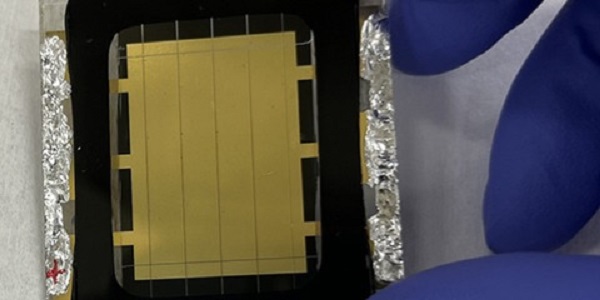An international team led by the US National Renewable Energy Laboratory (NREL) has used ionic salt for the electron transport layer of a perovskite solar cell to improve the stability and performance of the device. Test results showed a power conversion efficiency of 26% by 2% demolition after 2,100 hours of 1-Sun operation at 65 C.
An international team led by the National Renewable Energy Laboratory (NREL) of the US Department of Energy has applied a new ionic salt to the electron transport layer (ETL) interface in reverse perovskite solar cells to overcome weaknesses with frequently used optimized optimized optimized Buckminsterfullere (C60) ETLs.
Reverse perovskiet cells have a device structure that is known as “pin”, where hole-selective contact P is at the bottom of intrinsic perovskiet layer I with electron transport layer N at the top. Conventional halogenide perovskiet cells have the same structure but vice versa – a “NIP” layout. In NIP architecture, the solar cell is illuminated by the electron transport layer (ETL) side; In the PIN structure it is relieved by the HTL surface.
“A big challenge for the conventional device pile is the weak interface between the perovskiet -absorber layer and the ETL,” said Kai Zhu, corresponding author of the research, said PV -Magazine.
To tackle the problems, the researchers developed an ionic salt synthesized from C60, which is referred to as CPMAC in the study. The CPMAC acronage is shortly before N-Methylglycin and Tert-Butyl 4-formylbylbenzylcarbamate molecules and hydrochloric acid. It reacts with C60 to form an ionic salt called 4- (1 ′, 5´-dihydro-1-me-thyl-2’h-[5,6] Fullereno-C60-IH-[1,9-c]Pyrrol-2-yl) phenyl methanaminium chloride.
“We are pleased that our new CPMAC ionic salt can significantly strengthen this interface by about a factor of three, and it has no negative influence on the functioning of the device,” Zhu said.
In the study, the researchers used the CPMAC -salt as the “electrons shuttle” in inverted perovskite solar cells (PSC) and minimodules. “This ionic salt layer fundamentally relates to the disadvantages of the molecular C60 layer,” the researchers said.
Test results for the non-component perovskite solar cell with CPMAC showed a 26% power conversion-efficiency (PCE) with 2% demolition after 2,100 hours under standard 1-Sun operation at 65 C. The PSC had an efficiency of 25.5% at 85 ° C.
Mini modules of 6 cm2 achieved a PCE of 23% with less than 9% demolition after 2,200 hours of operation at 55C, according to the study.
The work is described in “C60-based ionic salt electrons shuttle for powerful inverted perovskiet solar modules“Published in Science.
The team included CUBICPV, University of Colorado Boulder, Arizona State University and Toledo University, all based in the US, as well as King Abdullah University of Science and Technology in Saudi Arabia and UK Newcastle University.
The scientists intend to investigate the potential for solution deposits based on the research results. “This CPMAC layer can be deposited by solution processing, which is attractive for large-scale production. We are planning to further develop the processing conditions of the solution and integrate this new material into large module platforms,” Zhu said.
This content is protected by copyright and may not be reused. If you want to work with us and reuse part of our content, please contact: editors@pv-magazine.com.

